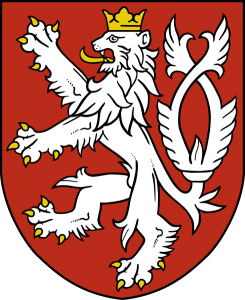

Czech Republic
 Czech Republic is a landlocked country in Central Europe. The country is bordered by Poland to the north, Germany to the west, Austria to the south and Slovakia to the east. The capital of the Czech Republic Prague is a great tourist destination and the biggest city in the Czech Republic. The present day country comprises 3 regions: Bohemia, Moravia and Silesia. Since May 1st 2004 Czech Republic has been a member of the European Union.
Czech Republic is a landlocked country in Central Europe. The country is bordered by Poland to the north, Germany to the west, Austria to the south and Slovakia to the east. The capital of the Czech Republic Prague is a great tourist destination and the biggest city in the Czech Republic. The present day country comprises 3 regions: Bohemia, Moravia and Silesia. Since May 1st 2004 Czech Republic has been a member of the European Union.
It comes as no surprise that a lot of tourist booklets start their story about the Czech Republic with the phrase “Czech is the heart of Old Europe”. The history of the Czech Republic is interesting and entertaining.
Since ancient times, at the crossroads of two old roads from Karlovy Vary and Plzen which meet near the provincial town Cheb, there has been a boulder warped by wind and rain and dappled with the imprints of sunshine and frost.
There is a legend about a nomadic tribe going through Europe at the time of the Stone Age. The leader of the tribe was mesmerized by the beauty and fertility of the land, and decided to settle on the territory belonging to the present day Czech Republic.
The Medieval Age (12th – 15th centuries) was the heyday of Czech culture and economy. At the beginning of the 15th century, the Husits movement began to develop. Fighters for independence led by Jan Hus started a movement demanding not only democratization of church and state, but also complete separation of the Czech territory from Germany. In the middle of 14th century Czech king Charles I became the Emperor of the Roman Empire under the name Charles IV. Czech became the strongest state in the Holy Roman Empire. The German people had considerable influence over the Czechs and until the middle of 14th century there had been no Czechs in the City Council. But, regardless of countless social contradictions, Czechs -from peasants to royalty – came together and rose to fight for national independence.
The leader of the rebels was Jan Hus – the first Czech who became the rector of Charles University (which had been ruled before him by the Germans).
The popular uprising was suppressed and Jan Hus was burned at the stake for heresy. The Husits’ defeat stalled Czech progress for many years ahead. The county not only became a province of Hungary (which for centuries had watched its neighbour with envy) but was declared a property of Austria.
The Golden Age in the history of the Czech Republic is considered to be the era of Emperor Rudolf II (1576-1611). Rudolf II moved the capital of the Roman Empire to Prague and declared a general tolerance – from this time, residents of the Czech Republic could freely practice Catholicism or Orthodoxy. These innovations were followed by a fast economic upturn.
But after Austro-Hungarian defeat in World War I, a newborn state appeared on the world map which was called Czechoslovakia.
Nowadays the Czech Republic is a small state in the heart of Europe and this make sense seeing as the Czech Republic is the actual geographical centre of Europe. Moreover Czech Republic can be called the golden middle due to symbiosis of Slavic and Western European cultures. Here there are signs of order and the law-abiding mentality more typical of Western culture and some signs of open-mindedness and sensitivity more characteristic of Slavic people. Of course everything is relative and everybody will form their own opinion, but in most cases citizens of post-Soviet republics feel at ease in the Czech Republic.
Source: http://www.czinfo.ru/


